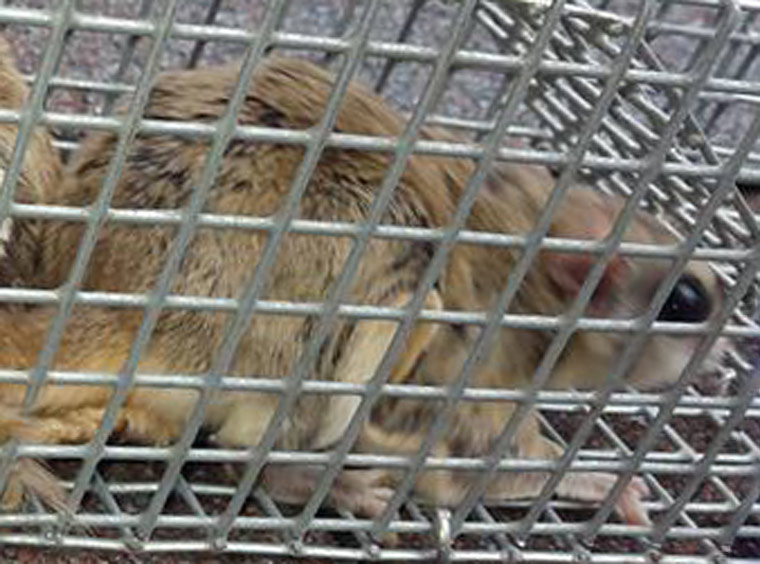- info@wildlife-removal.com
Call us for help in your town
Wildlife Removal Education
Ways To Prevent Flying Squirrels
Need flying squirrel removal in your hometown? We service over 500 USA locations! Click here to hire us in your town and check prices - updated for year 2020.
If you know that your neighbors have been having a few problems with flying squirrels, it’s time to take a closer look at your own property to see whether or not you have a problem with flying squirrels also. These gliding rodents are remarkably hard to get rid of once they’ve moved in and made themselves comfortable, so prevention is better than cure.

It all starts with an inspection. This should be a thorough inspection of both the interior and exterior of your property, paying particular attention to the upper levels, including the attic and roof. Flying squirrels spend an awful lot of their time in the air, just as the name would suggest. Despite not being able to actually fly, the flying squirrel will have no trouble at all getting onto your roof. If there is any damage up there, such as a hole that leads right into your attic, it will be just a matter of time before the animal finds it, makes the hole bigger if it can't already squeeze into it, and then its friends will come along for the ride too. These squirrels are very sociable and usually live in rather large groups. They will mostly be related to each other, but they don’t mind letting the odd stranger into the family from time to time, as long as they bring food and warmth when the group need it. There's safety in numbers, as they say.
The inspection should highlight problem areas. These problem areas will usually be in places such as around where your chimney meets the roof, where the roof meets the walls, under any tiles, around windows, screens, vents and duct coverings, and even where pipework enters the building, or cables/wires. A rat needs just an eighth of an inch sized hole in order to get in. Flying squirrels aren't that much bigger, but they're armed with similar teeth. What they can’t fit through now, they'll just chew through until they can fit through.
If you don't know whether or not you have flying squirrels in your attic or home, it is best to leave one of the holes open. The rest of the holes or patches of damage can be sealed and/or repaired. If you seal the animals in entirely, they'll die in your attic and then you'll have brand new problems to deal with. There is almost always more than flying squirrel too — they are incredibly sociable animals, and breed twice annually, with around five young per litter.
On the one remaining hole, add a repeater trap or exclusion device. You can also make pinpointing the right hole a lot easier by doing some investigative work. These animals are nocturnal, and this means that they will come out after the sun has gone down to find food. If you wait outside at sunset, you are likely to see these critters leaving your home and gliding off into the sunset. You could do the same at daybreak. When the sun comes up, these creatures will tuck themselves safely up in bed. Watching the outside of your home just before the sun rises in the morning may also give you a good idea of where these critters are heading.
It is always advisable to check the area before sealing any damage. Although you might not have a flying squirrel (or a few) up there, there’s a chance that you could have other nuisance wildlife, especially if you have notice patches of damage that could have come from a wild invader. Rats, mice, batts, birds, and even larger nuisance wildlife, such as raccoons, opossums, and regular, non-flying squirrels have been known to camp out in cozy attics, and many of them live up there for some time before they are noticed. Regular inspections will stop that. You know what they say — prevention is better than cure.
Go back to the Flying Squirrel Removal page, or learn tips to do it yourself with my How to Get Rid of Flying Squirrels guide.


















